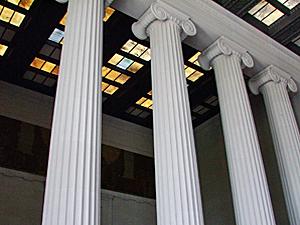 |
| Reviews and Templates for Expression We |
The 4 Golden Principles for Smart Building Systems
In the 1970's, Jimmy Carter urged Americans to embrace energy efficiency as a way out of the country's oil crises. He insisted that his fellow citizens sacrifice for the country by donning a sweater and turning down their thermostats.

Shivering, he insisted, was the new patriotism. He even insisted on having his picture repeatedly taken wearing a wool cardigan, and termed the struggle for energy efficiency as the "Moral Equivalent Of War." His political opponents soon made a habit of showing the goofily sweater-clad president at campaign events and mercilessly pointed out that his favorite term could be summed up by the acronym M.E.O.W. Needless to say, President Carter lost the 1980 election.
Fast forward 30 years and we are on the forefront of a revolution in energy efficiency. But this time is really different. Instead of sacrifice and discomfort, the new wave of energy efficiency technologies are based on waste reduction. Instead of manually turning down thermostats, everything is automated.
At IDC Energy Insights, we are exploring the arena of commercial building management systems, which we call smart buildings. These systems offer to chop off between 30 and 50 percent of the cost of energy for a typical commercial building. Some ideas have already failed. Others are on the verge of a tremendous buildout. The differentiators between the failures and the successful systems are what I call the four golden principles for smart building systems, enumerated here:
1) Non-Intrusion: If a system requires the inhabitants of the building to be uncomfortable, it will fail. The key to energy efficiency has nothing to do with making people suffer, it's identifying and eliminating waste. An intelligent sensor system that recognizes hot and cold spots and adjusts the ventilation system accordingly will go farther in reducing energy costs than any attempts to turn down thermostats by fiat. One example is Cavet Technologies' fluorescent lighting control equipment, which can reduce energy costs for lighting systems by 20 percent without anyone noticing a difference in brightness.
2) Automation: If someone is required to turn a switch and then, at some later point, to turn it back, the system will probably not work. Automation requires sophisticated control technology and cutting-edge software algorithms, but both technologies are now within grasp. Automation can rely on multiple feedback systems (sensor networks, weather forecasts, etc.) to be intelligent. Eliminate the human controller and the system will have a better chance of success. Building IQ, for instance, has a fault detection program for HVAC systems that entirely eliminates the need for anyone to adjust any settings after the installation.
3) Persistence: Studies have shown that the effect of an energy audit is usually degraded by as much as 75 percent after 12 months. Something breaks. Someone changes a setting and forgets to change it back. The new systems all have methods to eliminate those changes that degrade energy efficiency performance and allow it to be much more persistent than in the past. For instance, by automating the system, there is less chance that a human will accidentally change the settings. And fault detection software identifies problems in the control technology that would otherwise go unnoticed. By increasing the length of energy efficiency benefits, the investment in new smart buildings systems become easier to make. Scientific Conservation offers a software system that constantly monitors a building's HVAC plant and adjusts settings many months or years after initial installation.
4) High ROI: Building owners and managers are famous for being reluctant to invest in new technologies. The only way to make the sale is to offer a very compelling return on investment and short payback period. Most smart building systems are in the two- to three-year range today. Reducing that to 18 months (and even 12 months) will go a long way in determining which technologies will succeed in the coming race. A typical lighting management system, for instance, used to require five to seven years before it paid for itself in energy savings. Now these systems consistently offer a three-year payback, with even shorter periods in the offing as more buildings install the systems, spreading development costs across more buyers.
Adhere to the four rules of smart building systems, and your technology will be able to compete in the coming multi-billion dollar marketplace. Make people uncomfortable, force them to constantly adjust controls manually, allow your technology to wear off over time and charge inordinately high prices and you're not likely to be standing on the medal pedestal in the next few years.
Published April 14, 2011
|
|
|
|
Copyright 2011 Energy and Technical Services Ltd. All Rights Reserved. Energyts.com |